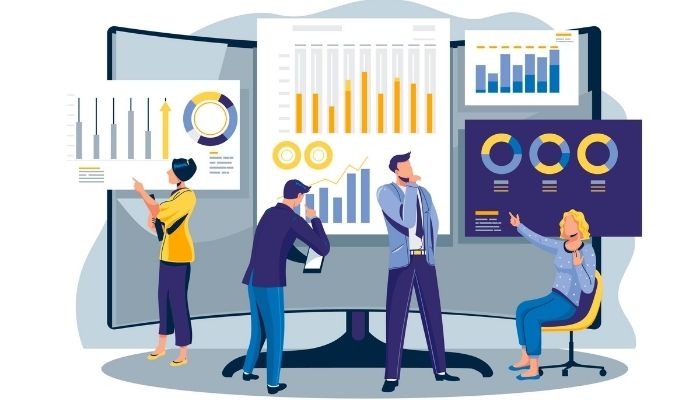For data and analytics to work their magic, they need to be accepted and implemented across the organization, irrespective of position and level. Like in any other step that an organization takes to grow and be successful, taking half measures when it comes to analytics could limit the impact. For instance, if an organization is planning to use a people analytics solution, it needs to go all out to ensure that it can enjoy all the benefits that this solution offers. Data drive analytics, and it is no wonder that its comprehensive adoption through different levels of an organization is key to making a difference. Any loophole could be an enormous disservice to an organization’s attempt to use analytics to grow.
Specifically talking about people analytics, it employs data that comes from the workforce of an organization and can have a massive impact on the entire organization, especially the human resources department and its future recruitment, retention, compensation, and training plans. People analytics makes use of different types of data related to an organization’s employees to provide them with a measure of the effectiveness of their workforce, allowing them to work towards improving it by making data-backed decisions.
To make people analytics work for them, organizations need to have a systematic plan to implement it and ensure that employees at different levels are buying into it. This will help them completely transform their people’s data and get genuine insights into it, which they can use in different ways.
You might also be interested to read: Analytics Jobs In India Looks Better Than Just Bright
One of the first steps in this direction is choosing the right people analytics solution provider. Organizations should choose a solutions provider that knows how critical feedback platforms work and how to use data to develop insights for making transformational changes across different levels.
However, before an organization starts people analytics, they need to ask themselves a few questions. Why do they want people analytics in their organization? Every organization needs people analytics more than ever. They need it to transform their function or deliver more with fewer resources at their disposal.
What are the challenges that we need people analytics for? It would be wrong to think that this solution will only be helpful for HR. It can help them to increase profitability. To sustain themselves in an emergency like the pandemic. To transform themselves according to the future. To figure out if they need to reskill/upskill existing talent or hire new people. To find out who amongst the top performers they need to keep. These are the reasons why an organization needs people analytics.
Some best practices for successful people analytics adoption:
- Making data-backed decision making a norm is the first step. The success of any organization depends primarily on its choices over some time. If those decisions are based on information, the chances that those will lead to success will be very high. Organizations have real-time access to all the data they need for a specific purpose and whenever needed. Organizations need to build a culture where decisions are always based on data, and people analytics is considered a pillar for success. Such an organization will never hold back from taking calculated risks, emphasizing skill development, and encouraging innovation.
- Data management is key to maximizing the impact of people analytics. Thus, it is imperative to properly organize and manage all the data. This challenge has affected many organizations for several years. They have all the data they need, but they can’t do it when collecting and analyzing it cohesively and efficiently. This is why it is so important to follow the basics of data management before putting people analytics to work. Data governance is one of the key ingredients of data management, which ensures that each individual within an organization knows their role in managing data reliability, accuracy, and uniformity.
- Finding the right people analytics tools is also significant. There are many data analysis, mining, and visualization tools available on the market these days. But contrary to popular belief, putting together a set of tools to collect, interpret, and transform data isn’t easy at all. And when choices aren’t so easy to make, organizations are often seen either delaying their decisions of getting these tools or buying those that aren’t good enough for them. Organizations need to understand that finding the right mix of tools can help them break the technology barrier and use people analytics to its full potential. So while investing in people analytics is essential, choosing just any tools won’t serve the purpose.
- Actions should succeed insight. When properly gathered and analyzed, data will reveal many things that organizations would never come to know by any other means. People analytics shows organizations how it comes to taking the next steps after developing insights. Data insights that are never converted into action are as good as no access to data at all. The fundamental purpose of using people analytics is to find areas that need to change and then implement those changes.
References:
- People Analytics: 6 Best Practices for Successful Adoption | AIHR | Neelie Verlinden
- 9 Best Practices for Implementing People Analytics | BetterWorks
You might also be interested to read:






